Are your company’s financial resources truly working for you? Many businesses focus on revenue growth but overlook the importance of strategic asset allocation, a crucial factor in long-term economic stability and success.
Asset allocation is distributing investments across different asset classes, such as stocks, bonds, and cash, to balance risk and maximize returns. Without a well-structured allocation strategy, companies may face financial inefficiencies, unstable cash flow, and missed growth opportunities.
But how can you ensure your company’s assets are allocated wisely? In this article, we’ll uncover the key principles of smart it and how leveraging HashMicro’s cutting-edge financial management software can help you make data-driven investment decisions.
Basahin upang matuklasan kung paano i-optimize ang iyong estratehiyang pampinansyal para sa pangmatagalang paglago.
Key Takeaways
|
Table of Contents

What is Asset Allocation?
Asset allocation is the process of strategically distributing investments across different asset classes such as stocks, bonds, and cash, to achieve a balance between risk and return. This approach helps businesses and investors manage financial risks while optimizing potential growth.
Rather than putting all resources into a single type of investment, ensures diversification, reducing the impact of market fluctuations.
A well-planned allocation strategy considers financial goals, risk tolerance, and market conditions, making it an essential practice for long-term economic stability and success.
Why Is Asset Allocation Important?
Without a proper strategy, businesses risk financial instability, poor investment returns, and missed opportunities for growth.
A well-structured allocation plan helps companies navigate market fluctuations, optimize resources, and achieve long-term financial goals. Here’s why asset allocation is essential for your business:
- Risk management: Diversifying investments across different asset classes helps minimize losses if one asset underperforms, reducing overall financial risk.
- Maximizing returns: A balanced allocation strategy ensures that your company’s capital is invested efficiently, optimizing potential returns while maintaining stability.
- Financial stability: Proper asset allocation creates a steady cash flow and safeguards your company against unexpected market downturns.
- Adaptability to market changes: A well-structured allocation plan allows businesses to adjust their investments based on economic trends and industry shifts.
- Long term growth: By aligning asset allocation with business goals, companies can ensure sustainable financial growth and scalability.
Understanding the importance of asset allocation is the first step in building a resilient financial strategy. In the next section, we’ll explore how to create an effective allocation plan tailored to your business needs.
Critical Factors Influencing Asset Allocation Decisions
Making the right asset allocation decisions requires a deep understanding of various financial and market factors. By considering these critical factors, companies can develop a strategic allocation plan that maximizes returns while maintaining financial stability. Below are the key elements that are crucial in shaping asset allocation decisions:
1. Risk tolerance
Risk tolerance defines how much risk an individual is willing and financially capable of taking with their investments. It reflects the extent to which an investor can endure potential losses in pursuit of higher returns.
For instance, risk averse investors tend to favor safer, low-volatility assets to preserve their capital, while aggressive investors are more willing to allocate a larger portion of their funds to high-risk investments in anticipation of substantial gains.
Understanding one’s risk tolerance is crucial in building a well-balanced investment strategy.
2. Goal factors
Goal factors refer to an individual’s specific financial objectives, such as achieving a certain return or saving for a particular purpose. These objectives influence investment decisions, as different goals require different risk and asset allocation approaches.
For example, someone saving for short-term needs may prefer low risk investments, while those aiming for long-term wealth accumulation might be more open to higher risk assets with greater potential returns.
3. Time horizon
The time horizon refers to when an investor plans to hold their investments before needing access to the funds. This factor is closely linked to financial goals, as different investment durations require different strategies.
Generally, short term investors prioritize stability and liquidity to minimize risk. In contrast, long term investors can afford to take on higher levels of risk, knowing they have more time to recover from market fluctuations and maximize returns.
How Asset Allocation Works

Understanding the mechanics of asset allocation is essential for developing a sound investment strategy. The process involves several critical steps to distribute financial resources effectively.
- First, clear financial objectives, whether focused on capital preservation, generating steady income, or achieving long-term growth must be established. Well-defined goals serve as the foundation for determining the appropriate asset allocation strategy.
- Second, risk tolerance must be assessed. This evaluation considers the level of risk an investor or business is willing and financially capable of taking, based on factors such as market conditions and overall investment strategy. Those with a higher risk tolerance may adopt a more aggressive portfolio, whereas conservative investors typically favor lower-risk assets.
- Third, the investment time horizon should be taken into account. The duration for which assets are expected to be held significantly influences allocation decisions. Short term investments generally require lower-risk, highly liquid assets, while long-term investments can accommodate higher levels of risk to pursue greater potential returns.
- Fourth, diversification remains a fundamental principle in asset allocation. Distributing investments across multiple asset classes such as equities, fixed income securities, and cash reduces exposure to market volatility and enhances portfolio stability.
- Finally, continuous monitoring and periodic rebalancing are essential to maintaining the desired asset allocation. As financial goals evolve and market conditions fluctuate, adjustments may be required to ensure that the investment strategy remains aligned with long term objectives.
Example of Asset Allocation
Consider the following example to understand better how asset allocation works in practice. A company with a moderate risk tolerance and a long term growth objective might allocate its investment portfolio as follows: 50% in equities for growth potential, 30% in bonds to provide stability and steady returns, and 20% in cash or liquid assets to ensure flexibility and short term financial security.
Alternatively, a business seeking low-risk, stable returns may take a more conservative approach, allocating 60% to bonds, 30% to cash, and only 10% to equities to minimize exposure to market fluctuations.
On the other hand, a company with higher risk tolerance and a focus on aggressive growth might allocate 70% to equities, 20% to bonds, and only 10% to cash, prioritizing higher returns while accepting increased market volatility.
These examples illustrate how varies based on financial goals, risk tolerance, and investment time horizon. Utilizing the best asset management software helps to create a well-structured allocation strategy. It ensures businesses effectively balance risk and reward, helping them achieve long-term economic stability and growth while optimizing their total assets.
Effective Strategies for Asset Allocation
Choosing the right asset allocation strategy is essential for balancing risk and return while ensuring financial stability. As part of effective asset management strategies, different approaches cater to varying risk tolerances, investment goals, and time horizons. Below are some of the most commonly used asset allocation strategies:
1. Strategic asset allocation
This approach involves setting a fixed percentage for each asset class based on long-term financial goals and risk tolerance. The allocation remains constant over time, requiring periodic rebalancing to maintain the original proportions.
For example, an investor might allocate 60% to equities, 30% to bonds, and 10% to cash, adjusting the portfolio only when market fluctuations cause imbalances.
2. Tactical asset allocation
Tactical asset allocation is a more flexible strategy that allows investors to adjust their asset mix based on market conditions temporarily. This approach seeks to capitalize on short-term opportunities while maintaining a long-term investment framework.
For instance, if the stock market is expected to perform well, an investor may temporarily increase equity exposure before returning to the original allocation when conditions change.
3. Dynamic asset allocation
Unlike strategic allocation which follows a fixed structure, dynamic continuously adjusts based on market trends, economic conditions, and investment performance.
Investors actively shift assets to maximize returns and minimize losses, making this strategy suitable for those who prefer an adaptive, hands on approach to portfolio management.
4. Income focused asset allocation
Designed for investors seeking stable and consistent returns, this strategy prioritizes assets that generate income, such as dividend-paying stocks, bonds, and real estate investment trusts (REITs).
It is ideal for businesses or individuals looking for reliable cash flow while preserving capital over the long term.

Simplify Asset Allocation Management with HashMicro Software
Managing asset allocation can be complex, requiring careful analysis, continuous monitoring, and timely adjustments to align with financial goals. Without the right tools, businesses may struggle with inefficiencies, inaccurate reporting, and missed investment opportunities.
HashMicro’s financial management software simplifies this process by automating asset allocation, optimizing risk management, and providing real-time insights.
With intelligent features designed for businesses of all sizes, HashMicro helps you easily make data driven investment decisions. Key features of HashMicro’s software:
- Multi-level analytical: This allows businesses to compare financial statements by project or branch, ensuring assets are allocated based on performance and operational needs.
- Profit and loss vs. budget and forecast: This comparison helps align asset allocation strategies with financial targets by comparing actual profit and loss against budgeted and forecasted figures.
- Cash flow reports: Provides real-time insights into cash inflows and outflows, enabling businesses to allocate assets efficiently while maintaining liquidity and financial stability.
- Forecast budget: Supports long-term investment planning by projecting budget needs and ensuring asset distribution aligns with financial strategies.
- Financial ratio: Delivers key financial indicators to assess business health, aiding in decision-making to balance risk and return in asset allocation.
Conclusion
Smart asset allocation is a fundamental strategy for achieving financial growth and long-term stability. By carefully distributing assets based on risk tolerance, investment goals, and market conditions, businesses can optimise returns while minimising risks.
Implementing the right strategy ensures better financial control, improved decision-making, and sustainable profitability.
To simplify and enhance your asset allocation process, HashMicro offers an advanced financial management solution that automates portfolio distribution, provides real-time insights, and optimizes investment strategies.
Experience the benefits firsthand with a free demo and take a smarter approach to managing your financial assets today.

FAQ Asset Allocation
-
What is the 70/30 investment strategy?
A 70/30 portfolio allocates 70% of its dollars to stocks and 30% to fixed income. An investor who uses this strategy might have 70% of their money invested in individual stocks, equity-focused mutual funds and equity-focused exchange-traded funds (ETFs).
-
What is basic asset allocation?
Asset allocation involves dividing an investment portfolio among different asset categories, such as stocks, bonds, and cash. The process of determining which mix of assets to hold in your portfolio is a very personal one.
-
Is equity more risky than bonds?
Bonds are generally considered less risky than equities because they provide regular income and a predetermined return on investment. Bonds can add stability to your portfolio as their values tend to be less volatile than equities.



































